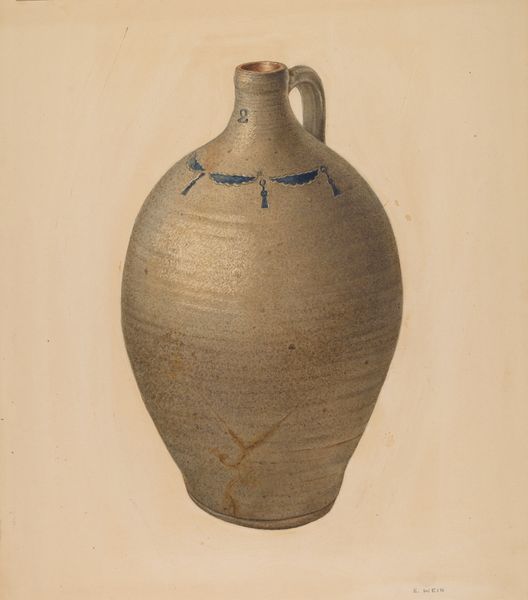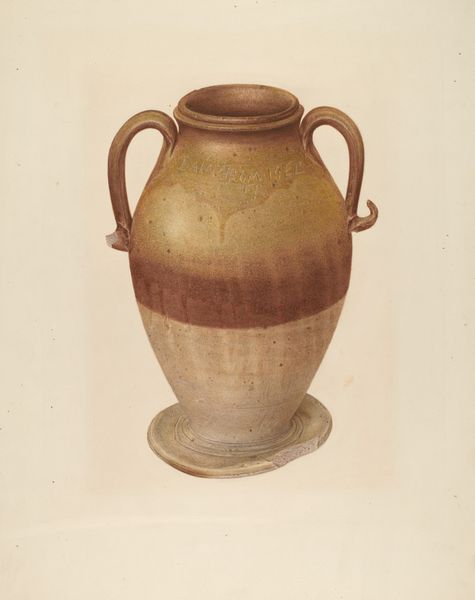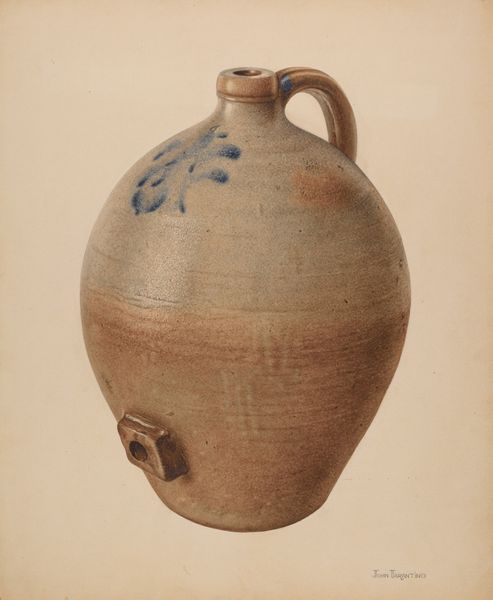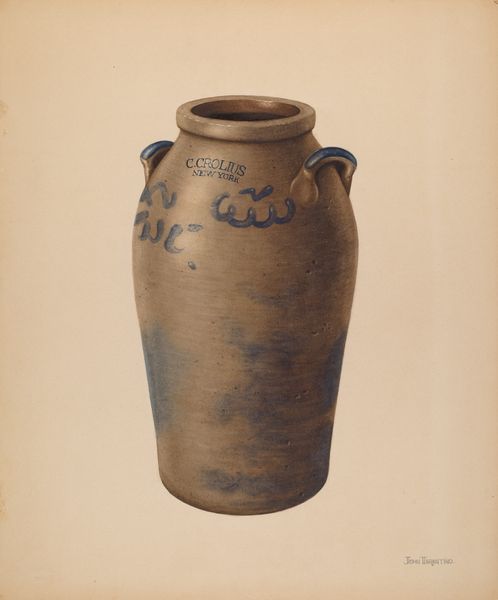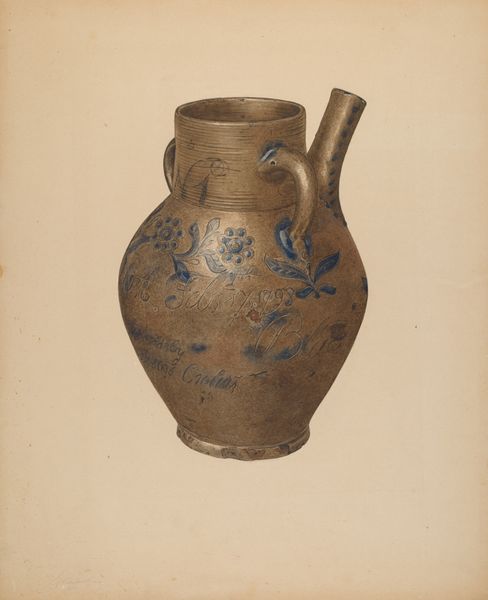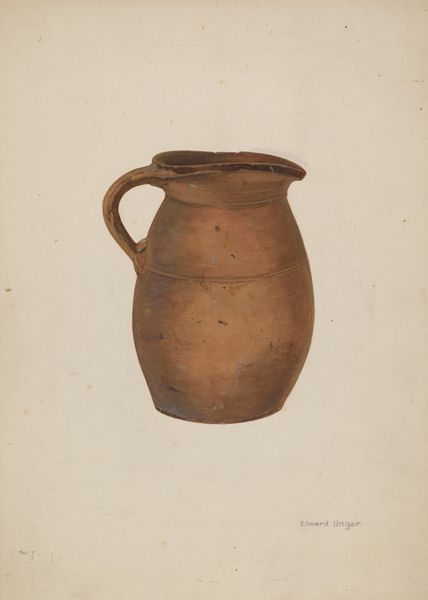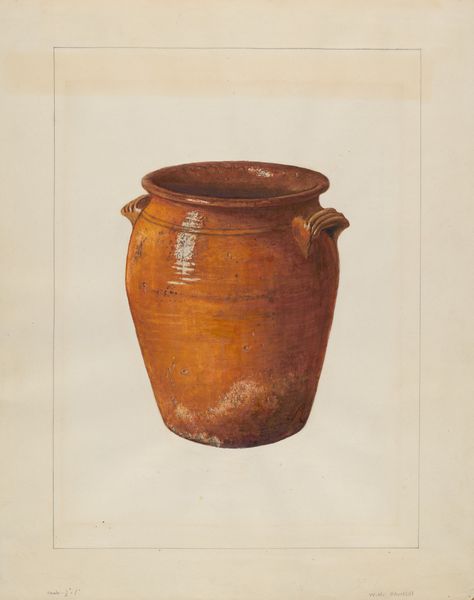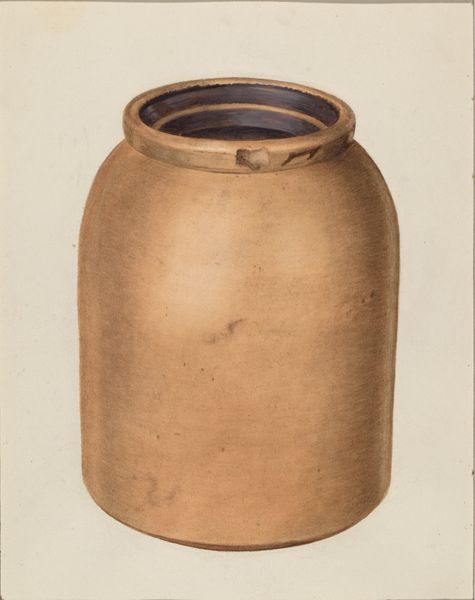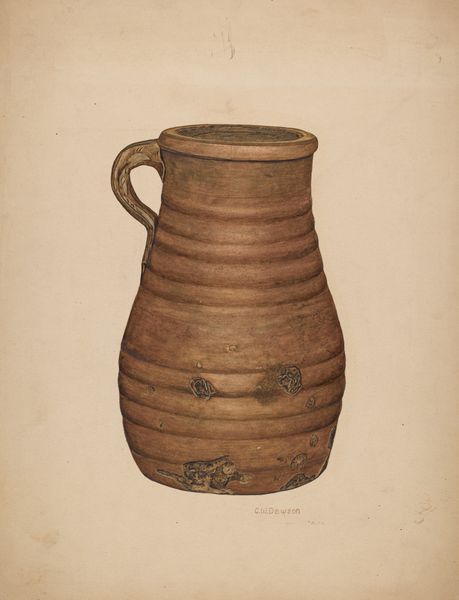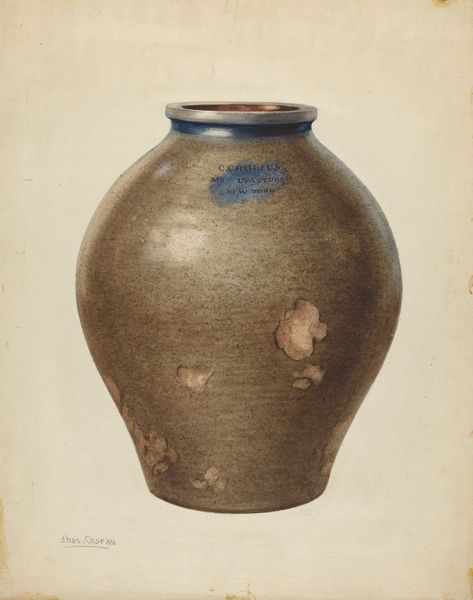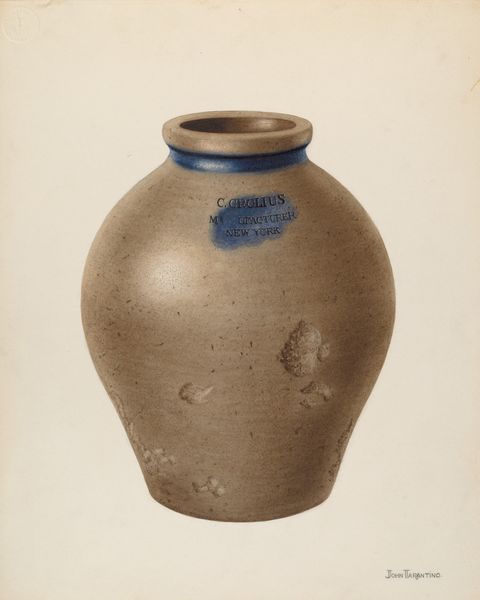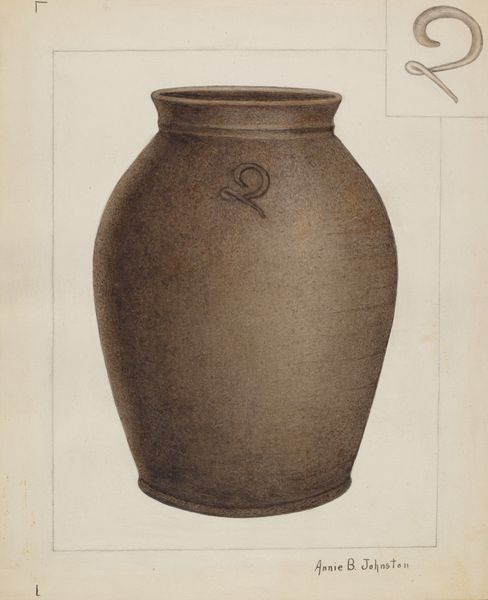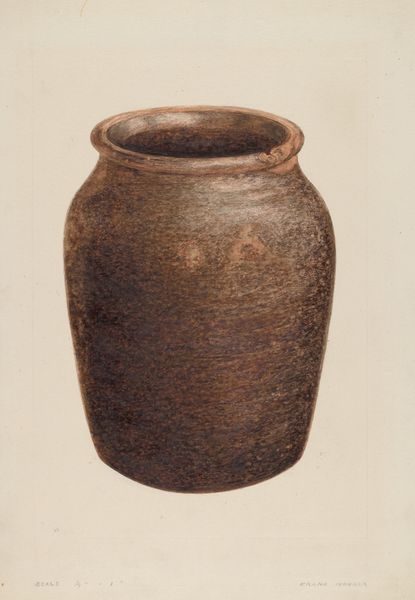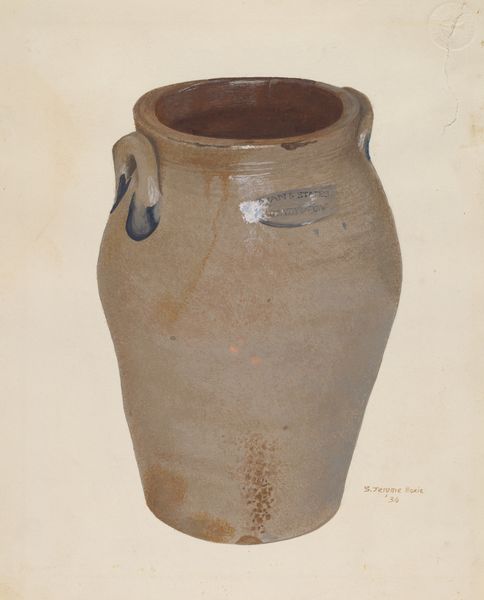
drawing, oil-paint, paper, watercolor, pencil
#
portrait
#
drawing
#
oil-paint
#
charcoal drawing
#
paper
#
oil painting
#
watercolor
#
pencil drawing
#
intimism
#
pencil
#
modernism
#
watercolor
#
realism
Dimensions: overall: 52.2 x 29 cm (20 9/16 x 11 7/16 in.) Original IAD Object: 5 gal capacity
Copyright: National Gallery of Art: CC0 1.0
Editor: Here we have Richard Barnett’s "Yellow Jar," created around 1938, and it appears to be rendered in watercolor. The simple subject matter gives it a very calm, understated presence. What formal elements stand out to you most in this piece? Curator: The dominance of the ovoid form, obviously. Consider the carefully modulated value gradations. Light softly kisses the upper registers of the jar, contrasting against the darker, recessed interior of the opening. The artist's command of subtle tonal shifts shapes our perception of volume, wouldn't you agree? Editor: Definitely, the subtle shading is key. The way the color warms towards the top rim suggests an interior light source, doesn’t it? Curator: Indeed. Now, observe the drawing itself; notice the balance achieved. Barnett’s choice to depict the jar frontally emphasizes its symmetry. How does that contribute to the work’s overall impact? Editor: It makes the imperfections and asymmetries of the jar even more noticeable. It looks handmade, not manufactured, and that contrast is really interesting. It lends to the work a kind of humanist, "warts and all" appeal, in a way. Curator: Precisely. Note also that the composition deliberately places the object in the center, highlighting a visual stability despite the jar's textural nuances and surface imperfections. The subtle color choices further enforce the artwork's still, quiet nature. Barnett coaxes profound meaning through elemental design, presenting the beauty found within simplicity. Editor: So, it's about seeing how even everyday objects can be visually interesting through shape, form, and shading, and stripping back art to its barest aesthetic elements. Thanks! Curator: You have it exactly!
Comments
No comments
Be the first to comment and join the conversation on the ultimate creative platform.
